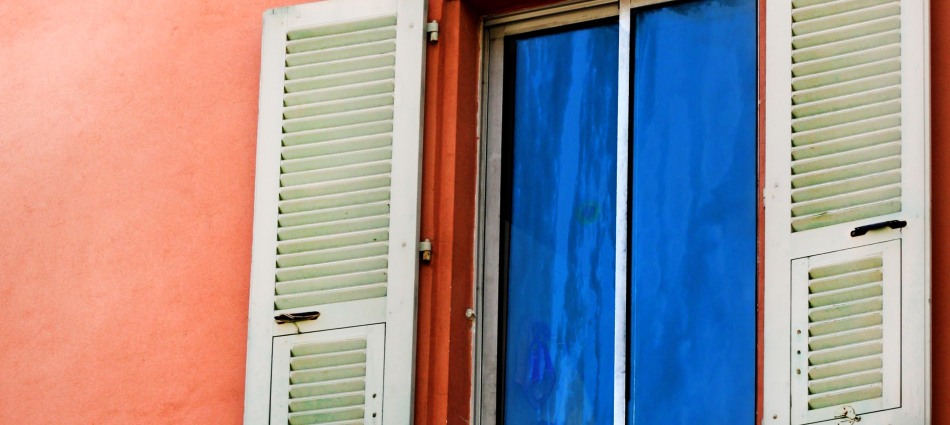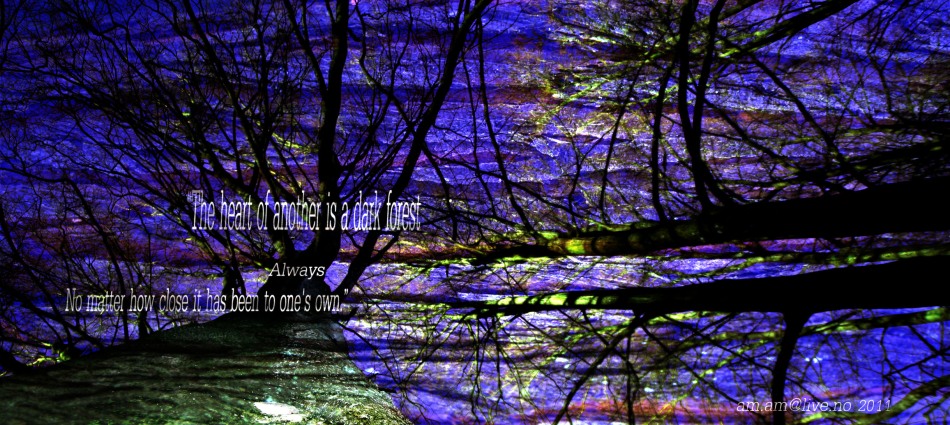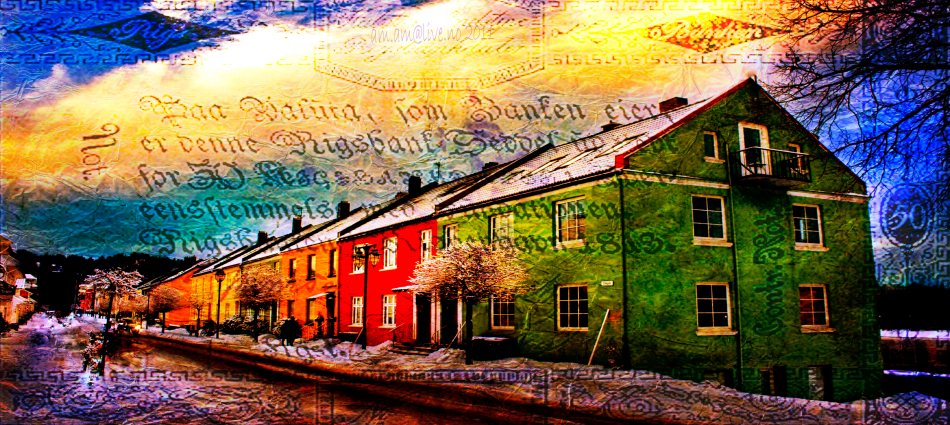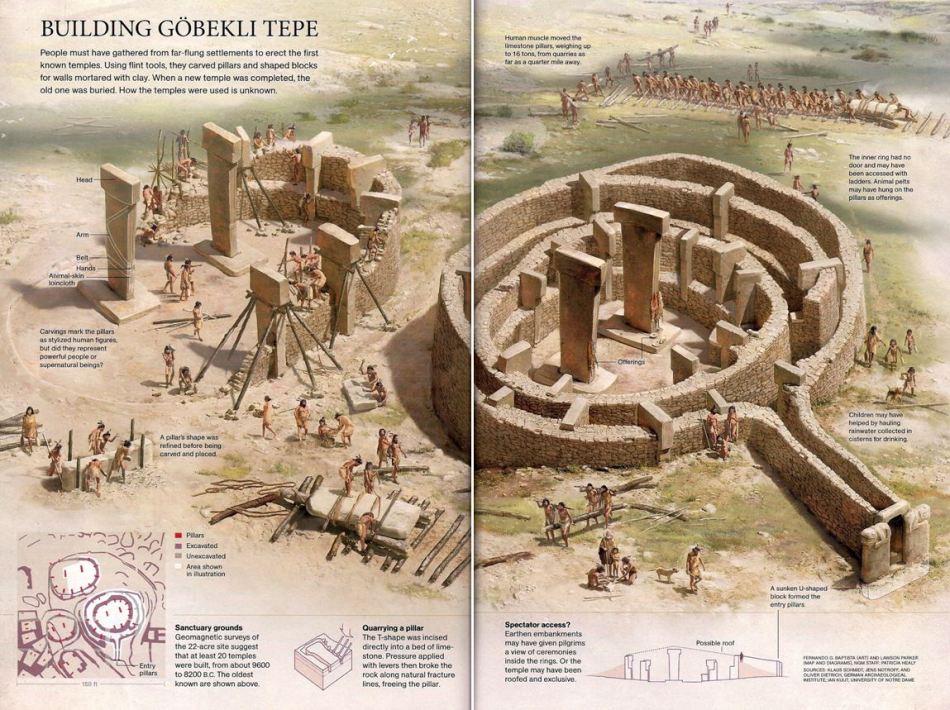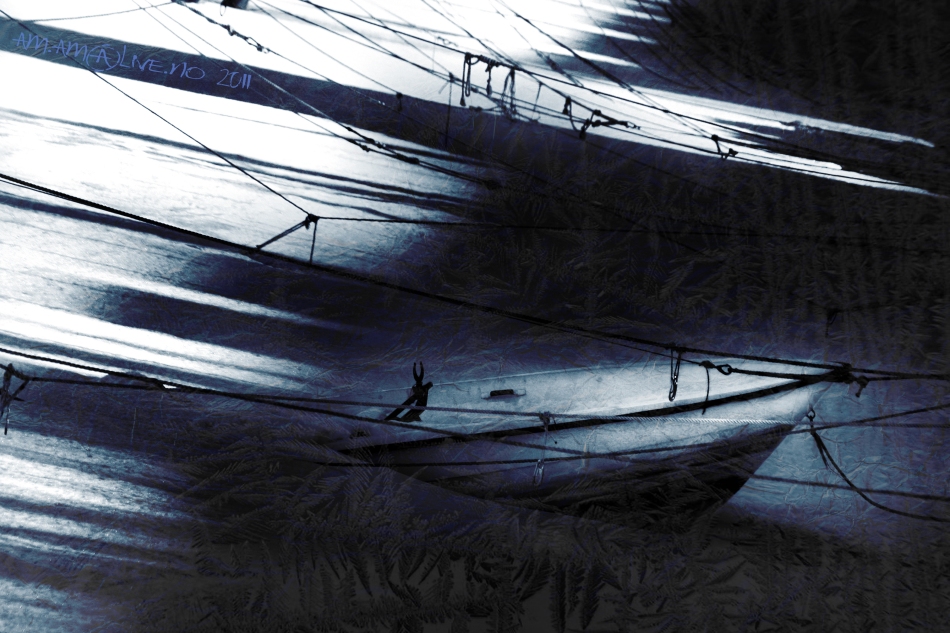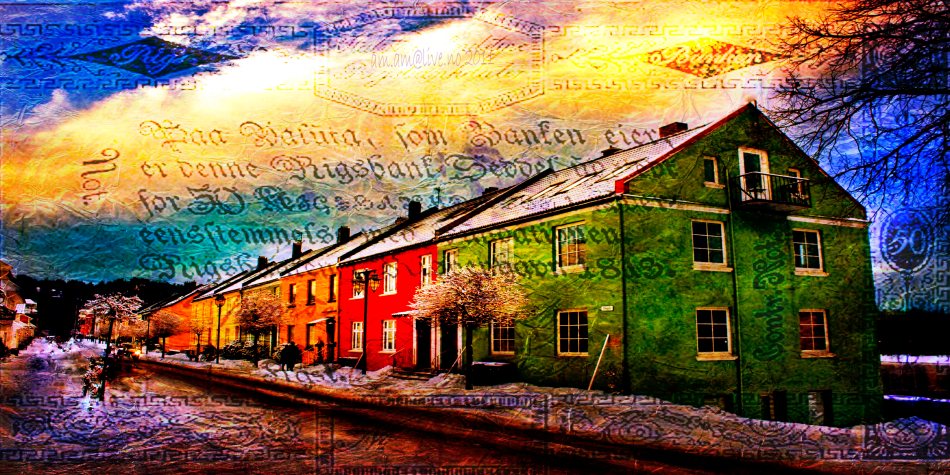In February and March 2010 I visited Syria and Turkey as a part of a course in comparative religious studies at the University of Agder. We visited some of the western-worlds oldest religious places related to Judaism, Christianity, Islam and and other ancient holy sites. But none of the previous or later experiences, beeing it staying a few days living a monastic life at the Monastary of Deir Mar Musa Al Habashi, watching the pilgrims at the Tomb of Thecla in Ma’aloula or standing in Gods Feet at the mystic ancient cite of Ain Dara, came close to the ambiance and spiritual feeling you got at top of “Pot Belly Hill”, which is the translation of Gobekli Tepe from Turkish to English. I had never even heard of it before, and we sort of just “stopped by” between visits to the ancient cities of Ur and Harran. I spent one day just trying to get my tounge twisted around the pronounciation of the name … some tounge-twister!
On March 1, after driving HOURS through early-spring kurdish,- and turkish countrysides, the pistachio and almond trees were just breaking into bloom, the grass was fresh and green and at times you had no problems seeing that this is part of THE FERTILE CRESCENT, amazingly beautiful and where it all began. But the land it is also hot and arrid and dusty, and we started driving up, and up, and up, and up bumpy deserted gravel-roads seemingly going nowhere, but then suddenly we found ourselves atop a “mountain” at a parkinglot.
The whole area seemed entirely deserted, nothing gave away that this was the worlds oldest holy site, the site that rewrote historybooks the day a kurdish shepherd found a mysterious stone sticking up of the ground in 1994 and started digging. The only thing that greets us now is the local shepherd /watchman and his dog, who we name “Johanna”. The shepherd and his family live in a small schack at the bottom of the excavation area, near the “parkinglot”. Just inside the stone-fencing there are several carvings in the bedrock. Two enormous holes, big enough to be used as pools, and along these houndreds of small circular holes of different sizes and placements dug directly in the rock.

In relation to these holes, right behind where I’m staying when I’m taking this photo, there are another form of rock-carvings. A large circular shape remind me of a sort of altar / sundial. The sun was setting while we were there and you can see the some of the “altar”formation, front right, the large circular shape and some of the holes found outside the formation are also on the inside, mid-left, some neatly reflecting the sunset in water from a recent rainfall.

From here we walk on foot further up along a flintstone covered path up to the holy site. Some say the flintstones are remnants of the tools used to carve the stone, so naturally i pocketed one as a souvenir. Only a few percent of the vast holy site are beeing unearthed at the moment. The work is clearly ongoing, this site has not yet reached the “professional/streamlined” presentation that we as tourists are used to. There are no guides in white shirts, no hords of souvenir-vendors, plaques with drawings and interpretations, only one small formally organized display at the parkinglot. And… how exiting! Here we are walking in the midst of one of the worlds most importante religious and historical sites, before it’s been commercialized. Gravel and tarpaulin cover different parts of the site, our only guide is Johanna, the dog.

It’s like getting a sneak peak at the pyramids before anyone else! Amazing! AND it makes you want to come back for more. Come back when more has been unearthed, when we understand more of the culture and when I at least have more time to explore and take photos. But this time the sun was setting so we followed the flintstone covered path, now lit by rays of setting sun, back to the bus.

The discovery of a holy site, 6000 years OLDER than Britains Stonehenge, Gobekli Tepe is dated to 9000 / 10 500 bc, this predates ALL former known advanced civilizations. The dating of the area coincides with the end of the last ice-age, humans should not even have aquired the skills of burning pottery yet. But findings at Gobekli Tepe shatter this “truth”. The evident skills needed to erect, to coordinate and not at least to decorate these stone-pillars shatter all previous theories on the evolution of man.
In order to organize the building, aquire the skills and fill the practical needs of a society so large and so advanced as to be able to build such an advanced structure one would need a cooperative and organized society of a level that was “not supposed” to happen for thousands of years. Humans should have been hunters and gatherers, nomads traveling vast areas in small groups. But this site bears witness of ability to organize food and shelter for large numbers of workers, maconry, possibly astronomy and a common religion, not just for a small group of people, but hundreds of people and their families must have committed time and resourses to building this temple over years. And in order to have aquired the skills needed to do these carvings, this art, groups of people must have been so well organized that members of the group have been dedicated to stonecarving for generations! Amazing!
The “absurdity” of the discovery, can be compared to how you would react if a one-year old child ( how evolved we thought the human race was at this place in time, BEFORE Gobekli Tepe ) would get up, walk over to the computer, in AutoCad draw a series of advanced arhitectural buildings, go out and organize all his toddler friends, build the advanced buildings on top of a hill 800 meters above sea-level, decorate the buildings, live and worship at the buildings, and then most absurd of it all fill inn the whole area with dirt and gravel, so as to cover and hide it completely, and then he and his friends would just return to their own playpin and evolve like a normal child, without remembering anything of the incident. Nobody knowing anything about the buildings for 12 500 years untill a shepherd finds the square top of one of the pillars sticking out of the ground on the mountaintop.
The guard told us that the area had been commonly known to be a “holy site” for generations. This had been marked through generations by keeping a Mulberry-tree at the site. Locals, and now also tourists, tie a piece of fabric in the branches of the tree to gain prosperity and blessings for their life. So when in 1994, the shepherd found this first stone and dug it out all on his own he was not surprised by the findings, but rather had a local legend turned fact. Though the international society took some more convincing of the sites importance. A German Archaeologist Klaus Schmidt was the first international excavator at the site, and he has now dedicated decades to this site.
Stonehenge in England, and other “henges” like it, have the same basic design as Gobekli Tepe, huge stone pillars with horizontal pillars placed ontop. And circle upon circle of stones growing outside oneanother. But Gobekli Tepe has been covered by earth for the entirety of our civilization, so no-one can have visited it and copied the design. So where did the people in Britain and Menorca get the same design idea from millennia later??
Gobekli Tepe also has beautiful designs and carvings of which there has been no evidence at the other European henges. And even if the Gobekli Tepe pillars have been protected from erosion from wind and weather, covered in earth as they have been, they do appear to have a “higher” grade of skill dedicated to the production than what is appearant in say Karahunj and Stonehenge, one might say that the others are less advanced copies. There are different kinds of stone-pillars all over the world. But not all have this mysterious “T-shape”, in addition to these in Turkey and more sites in England they are also found on Menorca.
In addition to this “t-shaped” henges I’m linking to three other interresting henges or stone-pillars that I have come across, there are so many of them, but one needs to start one place:)
I do like these monoliths that are called “Deer Stones” they are found all over Mongolia and Sibiria, near 600 of them have been found, dating back about 3000 years, so nowhere near the Gobekli Tepe site, but stone-pillars dedicated to worship and animals is a clear link. Many different kinds are found of this site of the Moron Stones, scroll down, not only deer but also faces.
There are the stones and the Ménec lines in Carnac, France. (I usually don’t link to Wikipedia, but here I can’t find one site with a better overview of them all. And you need to se the aria photos! )
There are the Karahunj stones in Armenia, known for their holes that some say point to constellations, other say are sundials, nobody knows. NB!!! In the “documentary” from The History Channel on Karahunj, same show as the Gobekli Tepe link further down, there is shown a stone tablet with two humans, this stone tablet is not shown ANYWHERE else in reference to this site, no internet site, no textbook I’ve been able to find, so I do not put any faith in the claims and theories related to Karahunj based on that tablet.
Here are two Youtube-bits with theories and mentions about Gobekli Tepe, one more and the other LESS serious;) But makes you wonder!
Reconstruction in clay and talk-through by National Geographic Very good for getting a “live” overview of the area!
Clip from the History Channels series “Ancient Aliens” Very nice and interresting clip, but aliens…? I don’t know;)

Speculations about the Gobekli Tepe site range from those who think this was the ACTUAL Noahs Ark, those who think this is mount Ararat where Noah “stabeled” his animals after the Ark stranded there. And that the flood explains that the site was buried, that the masses that buried it came not as an inteded act by the culture, but as an accident, covered by the silth and gravel in the undercurrents of The Flood. Some say that this is the original Garden of Eden. Others again refuse the whole idea of the site beeing the worlds oldest holy site, it does not correspond with their timeline on how the Earth was creeated by God between 6000 and 10 000 years ago. Others again who believe in the “Ancient Alien Theory” propose that ancient aliens lived here or helped the humans evolve at this time, this theory is part of one of the links further down in his post, and part of the “fib” at Karahunj. The Atlantis myth has been connected to this site.
Almost any and all myths and theories about lost and missing worlds has been linked to this site, but the fact is that we do not know. At this point in time we can only ask the questions and search for the answers…..
Leaving the Gobekli Tepe I had far more questions than I had before we came there. I keep wondering with amazement over this place that I only visited for a little over an hour, but where my thoughts keep returning to. New questions popping up every time. I follow the news and the research of this wonderous place with starry eyes!
Where did this advanced civilization come from?
How long did it take to build this site?
WHY did they build it?
Why did they cover the site up?
Why did they abandone it, and where did they go?
Who did they worship, and how?
What are these circular holes found everywhere?
WAS it at temple, or just a trading-station as some claim?
It has become more and more evident to me that so many wonders of the world and forgotten pieces of history will still show up in the most unexpected places, and they may still overthrow our entire view of ourselves!
The Anatolia Area and the Sout-Eastern Turkey contains LOTS and lots of interresting sites though, both for historians and others who are curious about origins of our culture. Do some research and….
….enjoy!
This is just a screen dump from Google Earth, I have found several different “locations” on the web for Gobekli Tepe, but this is it;) Top Right in the photo. My marker is on the site, so the GPS coordinates at the bottom-centre of the screen should send you straight to it:)



